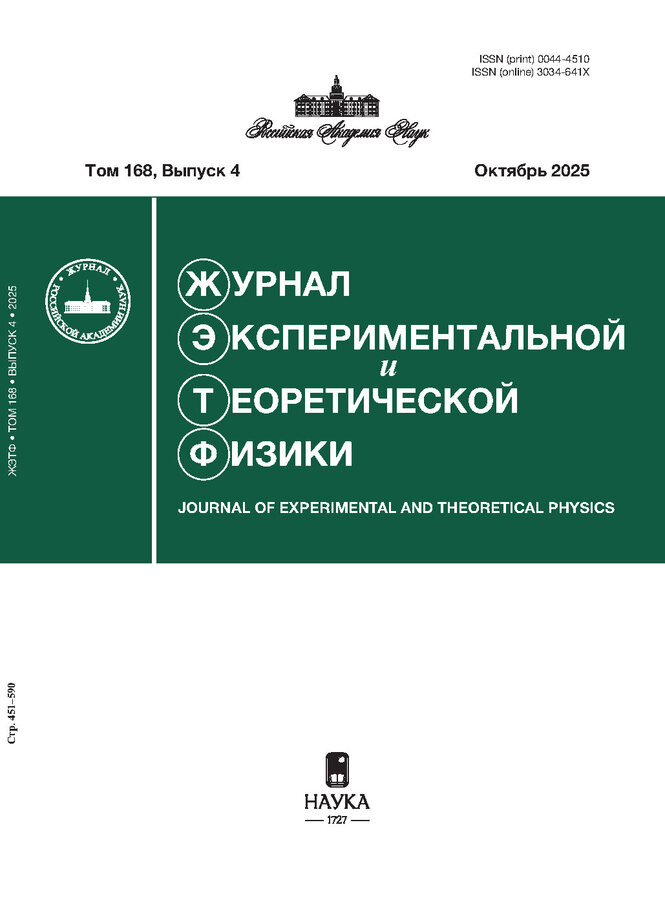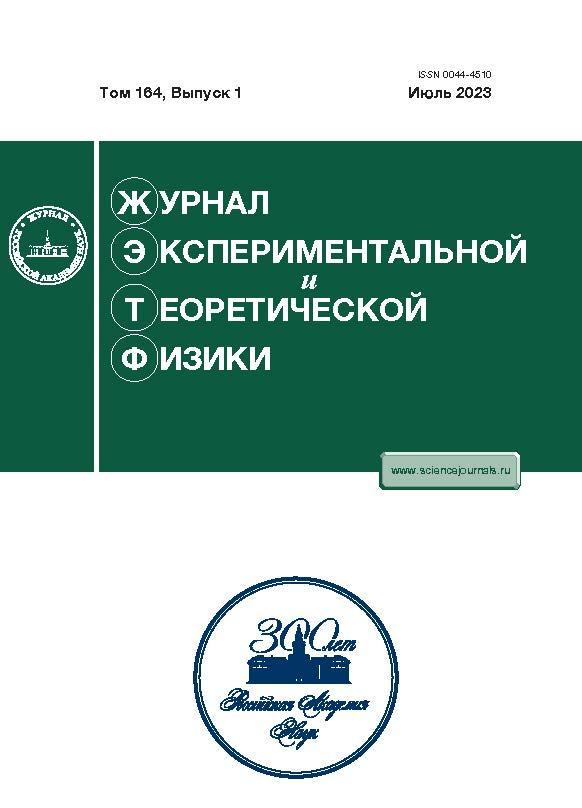Моделирование двухъямных потенциалов для уравнения шредингера
- Авторы: Дюгаев А.М.1, Григорьев П.Д.2,3
-
Учреждения:
- Институт теоретической физики имени Л. Д. Ландау Российской академии наук
- Институт теоретической физики им. Л. Д. Ландау РАН
- Национальный исследовательский технологический университет “МИСиС”
- Выпуск: Том 164, № 1 (2023)
- Страницы: 23-28
- Раздел: Статьи
- URL: https://archivog.com/0044-4510/article/view/653680
- DOI: https://doi.org/10.31857/S0044451023070027
- EDN: https://elibrary.ru/GDEWQV
- ID: 653680
Цитировать
Полный текст
Аннотация
Предложен новый метод определения расщепления уровней ∆ в двухъямном одномерном потенциале. Найдены две функции-«партнеры»: одна симметричная Ψ+, другая антисимметричная Ψ-. По ним из уравнения Шредингера найдены отвечающие им потенциалы V+(x) и V-(x) и энергии E0 и E1 . Уникаль-+ -ным свойством Ψ+ и Ψ- является тождественное равенство: E0 = E1 , что дает возможность определить+ -∆ по теории возмущений по параметру V+(x) - V-(x). Для двухъямного осцилляторного потенциалаполучена формула для расщепления уровней, связывающая инстантонный и одноямный пределы. Этот результат может быть востребован в теории поля, где возможность получения инстантонных решений по теории возмущений неоднократно обсуждалась. Приведен ряд потенциалов, для которых удается найти ∆ без квазиклассического приближения. Рассмотрены сингулярные потенциалы типа воронок. Дано сравнение определенной нами ∆ с результатами численного решения уравнения Шредингера для инстантонного потенциала.
Об авторах
А. М. Дюгаев
Институт теоретической физики имени Л. Д. Ландау Российской академии наук
Email: dyugaev@itp.ac.ru
Черноголовка, Московская область, 142432, Россия
П. Д. Григорьев
Институт теоретической физики им. Л. Д. Ландау РАН;Национальный исследовательский технологический университет “МИСиС”
Автор, ответственный за переписку.
Email: grigorev@itp.ac.ru
Московская область, 142432 Россия; Москва, 119049 Россия
Список литературы
- H. A. Kramers, Physica 7, 284 (1940).
- S. Chandrasekar, Rev. Mod. Phys. 15, 1 (1943).
- W. Miller, J. Chem. Phys. 61, 1823 (1974).
- А. И. Вайнштейн, В. И. Захаров, В. А. Новиков, М. А. Шифман, УФН 136, 553 (1982).
- Л. Д. Ландау, Е. М. Лифшиц, Квантовая механика, Физматлит, Москва (2001).
- R. Dutt, A. Khare, and U. Sukhatme, Phys. Lett. B 181, 295 (1986).
- J. W. Harald Mu¨ller-Kirsten, Introduction to Quantum Mechanics: Schr¨odinger Equation and Path Integral, 2nd ed., World Sci., Singapore (2012).
- R. Merzbacher, Quantum Mechanics, Wisley, New York (1970).
- M. Bernstein and L. S. Brown, Phys. Rev. Lett. 52, 1933 (1984).
- P. Kumar, M.Ruiz-Altaba, and B. S. Thomas, Phys. Rev. Lett. 57, 2749 (1986).
- Wai-Yee Keung, E. Kovacs, and U. P. Sukhatme, Phys. Rev. Lett. 60, 41 (1988).
- A. V. Turbiner, Lett. Math. Phys. 74, 169 (2005); doi: 10.1007/s11005-005-0012-z
- A. V. Turbiner, Int. J. Mod. Phys. A 25, 647 (2010); doi: 10.1142/S0217751X10048937
- А. V. Turbiner and J. C. del Valle, Acta Polytech. 62, 208 (2022); doi: 10.14311/AP.2022.62.0208
- Ю. И. Богданов, Н. А. Богданова, Д. В. Фастовец, В. Ф. Лукичев, Письма в ЖЭТФ 114, 391 (2021).
- A. M. Polyakov, Nucl. Phys. B 120, 429 (1977).
- J. Zinn-Justin, Nucl. Phys. B 192, 125 (1981)
- , 333 (1983).
- J. Zinn-Justin and U. D. Jentschura, Ann. Phys. 313, 197 (2004)
- , 269 (2004)
- Phys. Lett. B 596, 138 (2004).
- G. V. Dunne and M. Unsal, Phys. Rev. D 89, 105009 (2014).
- M. A. Escobar-Ruiz, E. Shuryak, and A. V. Turbiner, Phys. Rev. D 92, 025046 (2015)
- Erratum Phys. Rev. D 92, 089902 (2015).
- E. Shuryak and A. V. Turbiner, Phys. Rev. D 98, 105007 (2018).
- А. М. Дюгаев, П. Д. Григорьев, Письма в ЖЭТФ 112, 107 (2020).
- А. В. Турбинер, Письма в ЖЭТФ 30, 379 (1979).
- И. С. Градштейн, И. М. Рыжик, Таблицы интегралов, сумм, рядов и произведений, Наука, Москва (1971).
- И. В. Андреев, Хромодинамика и жесткие процессы при высоких энергиях, Наука, Москва (1981).
- Л. Д. Ландау, Е. М. Лифшиц, Статистическая физика, Часть 1, Физматлит, Москва (2005).
Дополнительные файлы











